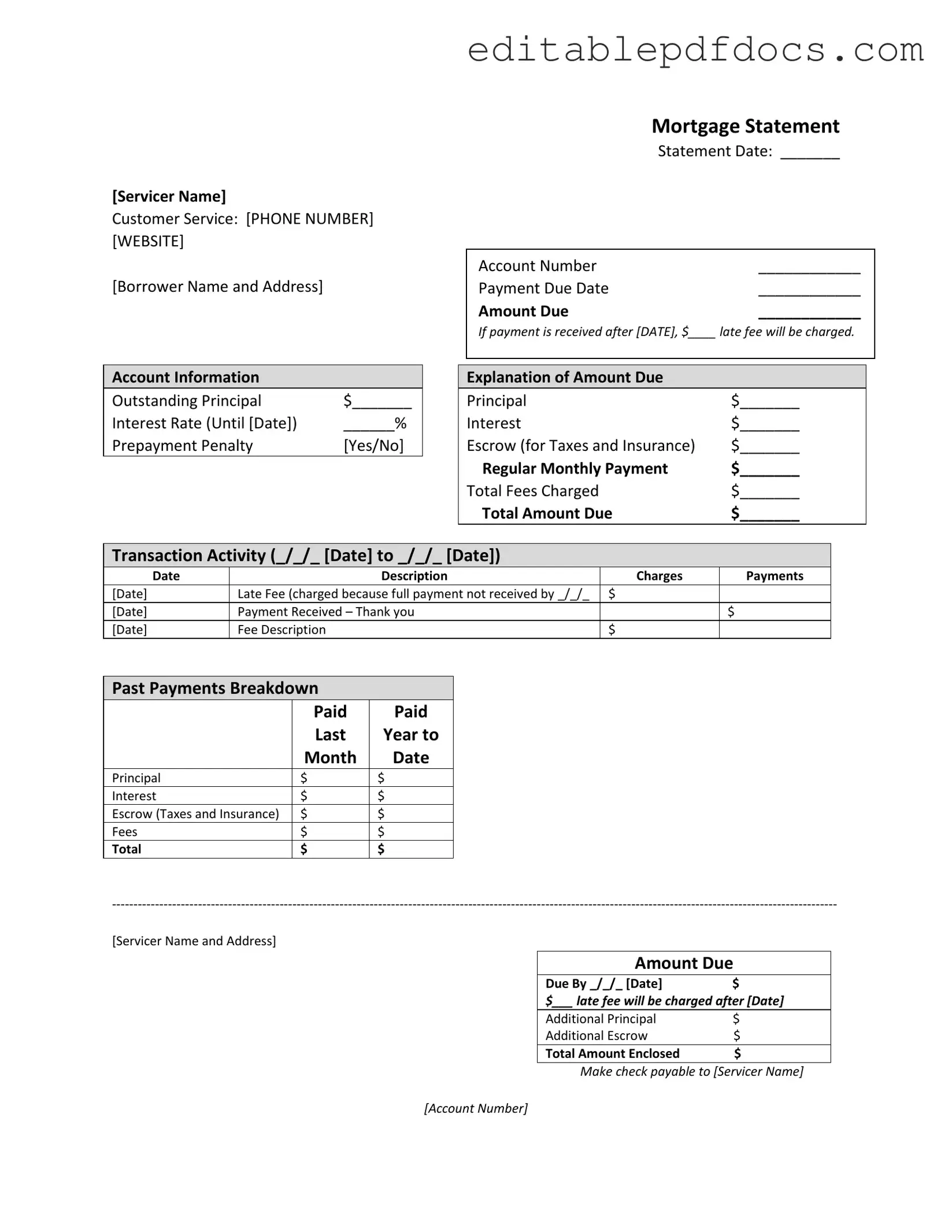Filling out the Mortgage Statement form accurately is crucial to avoid complications with your mortgage. Many individuals make common mistakes that can lead to confusion or even financial penalties. Here are ten mistakes to watch out for when completing this important document.
First, one of the most frequent errors is neglecting to fill in the statement date. This date is essential as it indicates the timeframe of the mortgage statement. Without it, the servicer may not process the information correctly, leading to misunderstandings about payment deadlines.
Another common mistake is failing to provide the correct account number. This number is unique to your mortgage and must be accurate to ensure that payments are credited to the right account. Double-check this information to avoid unnecessary delays.
People often overlook the payment due date. This date is critical for ensuring timely payments. If you miss this date, you could incur late fees, which can add up quickly. Always confirm the due date listed on your statement.
Many individuals forget to include the amount due. This figure is essential for understanding how much you need to pay to stay current on your mortgage. If you leave this blank, it may lead to confusion about your financial obligations.
Another mistake involves misunderstanding the outstanding principal amount. This figure represents the remaining balance of your loan. Miscalculating this can result in incorrect payment amounts and could affect your loan's interest calculations.
Additionally, people sometimes fail to check the interest rate listed on the form. This rate can change over time, and it’s important to ensure that the figure is accurate. An incorrect interest rate can lead to miscalculations in your monthly payments.
Some individuals also neglect to indicate whether there is a prepayment penalty. This penalty applies if you pay off your mortgage early. Not marking this section can lead to unexpected fees later on.
When detailing the explanation of amount due, mistakes often occur in calculating the principal, interest, and escrow amounts. Each of these components contributes to the total payment due. Errors here can lead to underpayment or overpayment, both of which can have consequences.
Another frequent oversight is failing to review the transaction activity section. This area provides a history of your payments and any fees charged. Missing information here can lead to disputes about your payment history.
Lastly, individuals often ignore the important messages section, which contains crucial information about partial payments and delinquency notices. Understanding these messages can help you avoid serious consequences, such as foreclosure.
By being aware of these common mistakes, you can fill out your Mortgage Statement form with confidence and accuracy. Taking the time to review each section carefully will help ensure that your mortgage is managed effectively.
